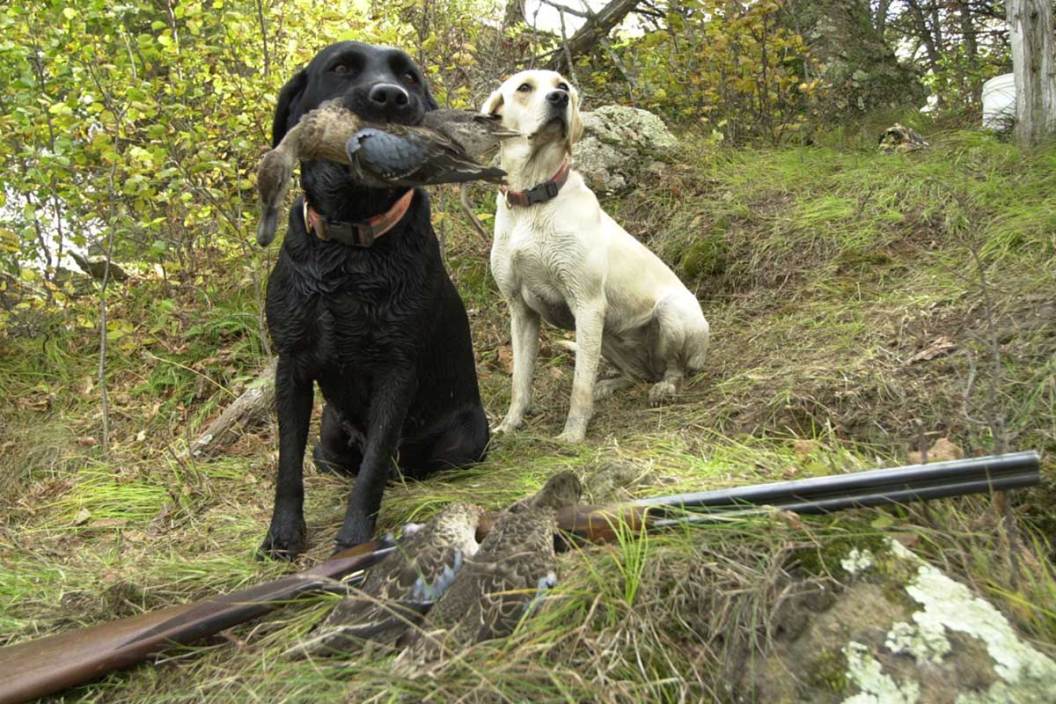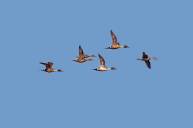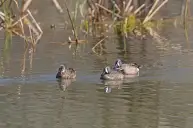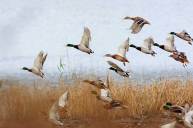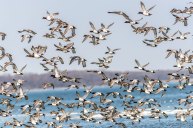Here's a short look at the characteristics of a great wild game bird: the blue winged teal.
As a game bird, the blue winged teal might be one of the most sought after due to its difficulty to decoy, ability to evade the shot, and its speedy quick flight pattern. As an animal of North America, it is one of the most beautiful creatures in the ponds and sloughs across the nation, and every hunter can get behind that.
For those of us who want to chase these diminutive birds, and for those who love to simply see and watch them, they are easy to fall for as both a game animal to harvest and an important piece of wildlife that we love to observe.
For us as waterfowl hunters, we can never get tired of learning about our favorite game animals. The more we know, the better the odds of not only filling the game bag during open season, but ensuring that they are a long-term survivor on the continent.
Description
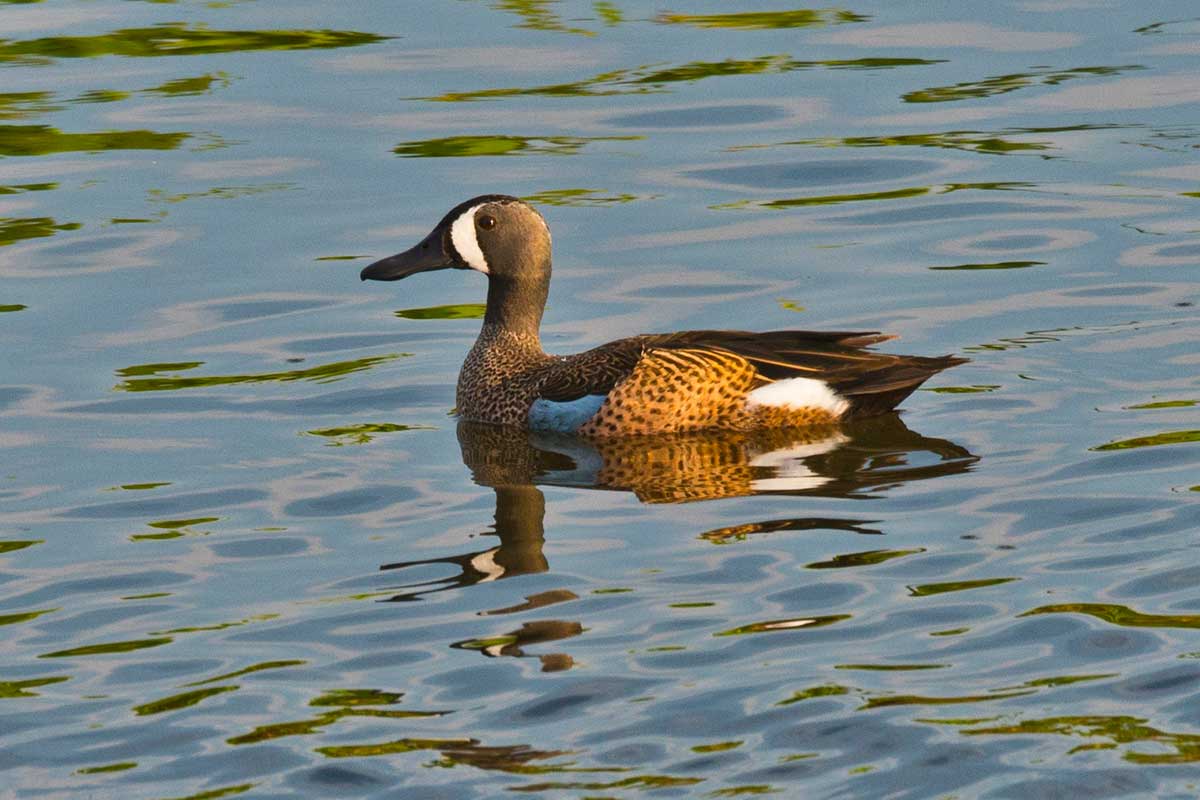
Bernard P. Friel/Universal Images Group via Getty Images
As The Cornell Lab of Ornithology tells us,
Blue-winged Teal are long distance migrants, with some birds heading all the way to South America for the winter. Therefore, they take off early on spring and fall migration, leaving their breeding grounds in the United States and Canada well before other species in the fall.
For northern hunters especially, this means that they are the first to arrive and fly through during the early part of September and October. They are known to get into the air early during first light, making them look even smaller when they arrive over your decoys.
The Anas discors (their scientific name) is identified by the colorful markings of the drake. Most of his body has a buffy colored look with dense patches of black speckles. Their bluish-gray head, black bill, and dark wings can help identify them, but it is the obvious white crescent in the front of the eye that most of us look for when identifying the male blue winged teal drake.
They are one of the smaller North American waterfowl species, roughly the size of the average crow. Hens are the same basic size, but as with most waterfowl species are a mottled brown color to help them hide during many parts of the year, whether to be safe on their nest or while protecting their young.
Habitat
The August Teal, as some like to call them, nests among grasses or other common vegetation and forage in the summer in shallow ponds, marshes, and other calm water areas. One interesting fact about these birds is that they are flightless during their late summer molt, and they spend this time in prairie potholes and other areas to escape predation.
On their southern U.S. wintering grounds they can live in both fresh or brackish wetlands and like to surround themselves with plenty of decaying organic matter. South of the border they may have the use many different habitats including estuaries, mangroves, and other slow moving waters.
Teal, like many waterfowl, eat aquatic insect larvae, crustaceans, clams, and even snails as well as vegetation. In winter when they can find them, seeds such as rice, millet, and water lilies are the predominant foods.
Breeding
The blue winged teal breeds from the central and northern part of the United States, all across the Canadian provinces, and well up into Alaska. It may not seem like it at times, but they are known to be the second most abundant dabbling duck in North America, behind only the mallard.
While they can be found year round in places like central and eastern Texas, they do most of their breeding in the northern states and Canadian pothole prairies. After breeding, the hens choose a nesting sight the is typically at least a foot above the nearest water and covered by vegetation.
The blue winged teal usually only has one brood per season with a clutch size of around 8 to 12 creamy white eggs in each nest.
The drake blue winged teal will make some exaggerated displays while sitting to the side of the hen he is courting. These include pumping the head up and down, dipping the head underwater rapidly, or by tipping up in the water with his body feathers raised.
Hunting the Blue Winged Teal
It seems like any method for hunting these fast moving birds means locating early season birds. The best part is that many states have long since recognized this fact and offer an early teal season for both the blue wings and their cousins the cinnamon and green winged teal.
Scouting is key for these small but wary birds. They generally prefer larger waters than some of the other smaller species do, unlike the wood duck, which can offer wingshooting on even the smallest creeks.
Swamps and sloughs with expanses of open water will hold teal, as well as larger lakes and impoundments. Also, flooded rice fields with plenty of open area around them for the birds to see well enough to feel at ease are good areas to set up.
One good thing about teal hunting is the fact that you aren't going to need a big block of decoys. Teal will generally decoy to standard mallard dekes with a half-dozen to a dozen teal decoys placed to the side of those.
As stated, teal flights happen early, often, and are short and sweet. If you find yourself watching but not shooting teal shortly after daybreak, it may be time for a move. It's not always the case, but teal seem to have a knack for flying before the sun has come up. In some areas, this can mean before the legal shooting time has arrived. If you are hunting an early teal season, your day can sometimes come to a quick end.
Other Blue Winged Teal Facts
The blue-winged teal is one of the latest ducks to migrate northward in spring, and one of the first to migrate southward in fall. These amazing birds migrate incredible distances. In fact, "The oldest recorded Blue-winged Teal was a male, and at least 23 years, 3 months old. He had been banded in Saskatchewan and was found in Cuba."
They don't generally quack like other small ducks, but as you can see in the video above, they do have their own unique call.
These fast little birds are some of the favorite of both the bird watching crowd and the hunting community across the nation, and both groups will agree: you never get tired of seeing them.
Looking for a little more or even hot lunch for your hunting blind? Follow my webpage, or on Facebook and YouTube.
Products featured on Wide Open Spaces are independently selected by our editors. However, when you buy something through our links, we may earn a commission.
NEXT: THE 7 BEST DUCK CALLS FOR THE MARSH, FIELD, AND TIMBER
